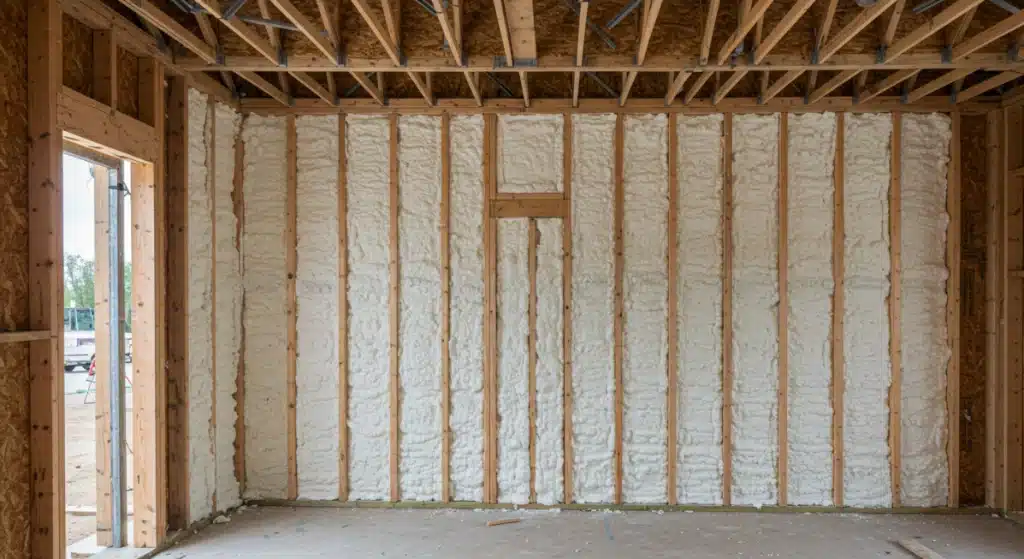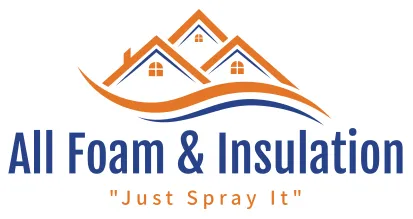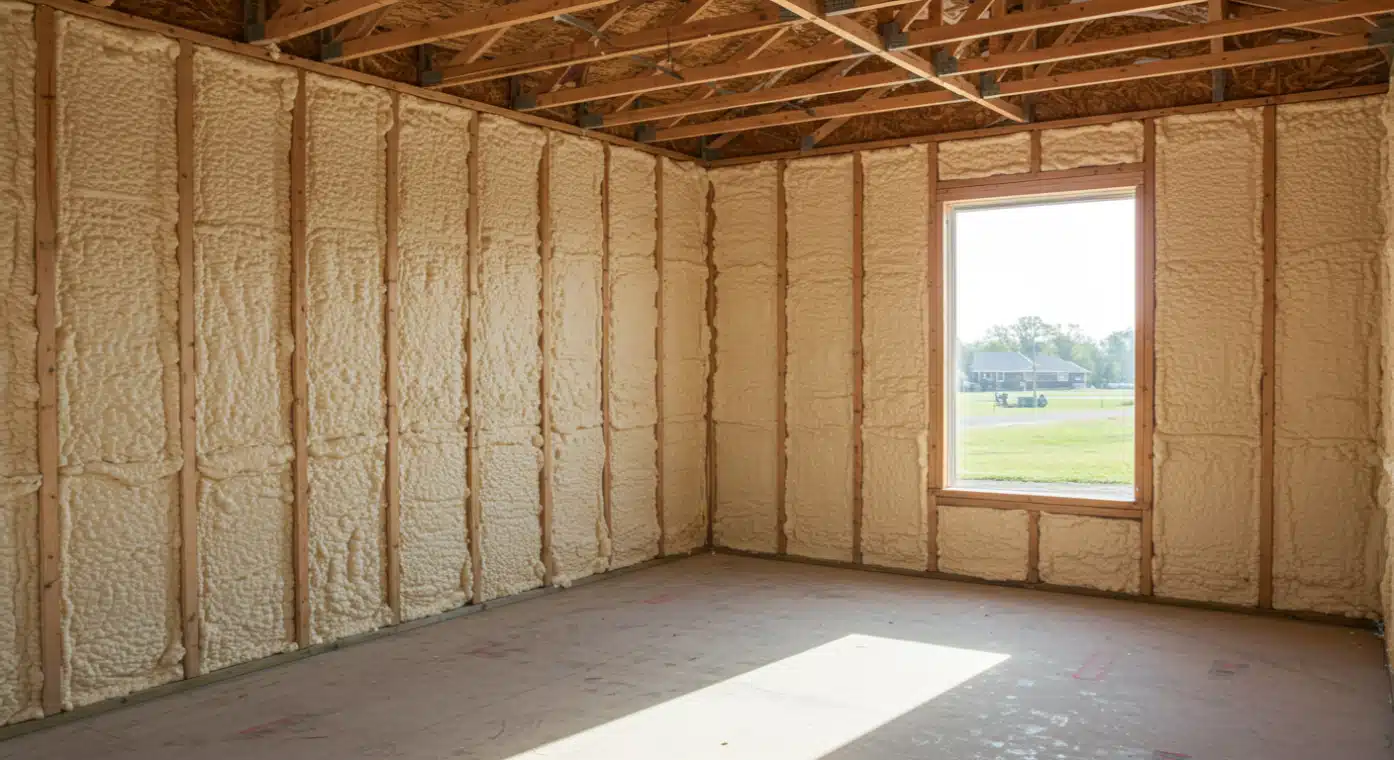Spray foam insulation effectively stabilizes indoor humidity by reducing air infiltration and limiting moisture transfer through walls and ceilings. In Medford, OR, where seasonal shifts bring both dry summers and damp winters, controlling indoor humidity protects structural integrity and supports healthy indoor air quality. Closed-cell and open-cell spray foam serve different roles in achieving this goal.
Spray foam seals gaps where humid air can enter or escape, limiting condensation that causes mold or material damage. This article explains how spray foam works in real conditions, outlines performance differences, and clarifies when each type suits specific building needs.
All Foam & Insulation, LLC brings hands-on experience installing spray foam across various residential and commercial projects in Medford and southern Oregon. This guide is informed by direct field application, material testing, and building science principles.
How Spray Foam Controls Indoor Humidity
Closed-cell vs. Open-cell Spray Foam: Humidity Impact
Spray foam creates an air seal that restricts external moisture from penetrating the building envelope. Closed-cell foam blocks vapor transmission, while open-cell foam allows controlled moisture permeability. This ability to manage moisture movement improves HVAC efficiency, prevents condensation on internal surfaces, and reduces mold risks.
[Image: Spray foam application in a crawlspace in Medford, OR]
| Feature | Closed-Cell Spray Foam | Open-Cell Spray Foam |
|---|---|---|
| Air Barrier | Yes | Yes |
| Vapor Retarder | Yes (Class II) | No (Permeable) |
| R-value (per inch) | 6.5 – 7 | 3.6 – 4 |
| Density | 2.0 lbs/ft³ | 0.5 lbs/ft³ |
| Ideal Use Case | High humidity control areas | Soundproofing, low-cost areas |
| Water Absorption | Very low | High (can absorb moisture) |
| Wall Strength Contribution | High | Low |
Technical Performance in Medford’s Climate
Medford averages 18 inches of precipitation per year with significant indoor-outdoor temperature swings between seasons. These factors increase vapor drive and require careful insulation choices.
| Performance Metric | Closed-Cell Foam | Open-Cell Foam |
|---|---|---|
| Vapor Transmission Rate | <1.0 perm | >10 perms |
| Thermal Drift (R-value loss) | Minimal over time | Moderate |
| Mold Resistance | High | Moderate |
| Indoor Moisture Control | Strong barrier | Conditional (needs drying path) |
Bonus Tip: Install closed-cell foam on rim joists and basement walls where humidity loads are highest. Use open-cell only in conditioned interior spaces where walls can dry to the interior.
Real Performance Insights from Local Use
In homes retrofitted by All Foam & Insulation, LLC in east Medford, humidity levels dropped an average of 12-17% after switching from fiberglass batts to closed-cell foam. Occupants reported fewer moisture-related wall stains and a noticeable reduction in HVAC cycling.
In a metal-roofed warehouse insulated with open-cell foam, condensation persisted until strategic closed-cell application on roof purlins blocked vapor movement. This hybrid approach balances cost with control.
Source: On-site performance data from 2023-2024 retrofit logs maintained by All Foam & Insulation, LLC.

Things to Consider Before Making a Decision
- Building Type: Closed-cell foam suits basements, crawlspaces, and commercial buildings. Open-cell foam works in interior walls and ceilings.
- Budget: Open-cell is cheaper per square foot but may require additional vapor control.
- Drying Potential: Medford buildings often need the ability to dry in at least one direction. Use foam types accordingly.
- Existing Materials: Some homes may require removal of vapor barriers before spray foam installation.
Bonus Tip: Conduct a blower door test before insulation to identify leakage zones and confirm where sealing will improve humidity control.
Common Questions Before Choosing Spray Foam
Will spray foam completely stop indoor moisture?
It reduces moisture movement but doesn’t eliminate humidity generated by cooking, showers, or indoor activities. Use in combination with ventilation.
Can spray foam be used in older homes?
Yes, but assess wall assemblies first to avoid trapping moisture in impermeable layers.
Is open-cell foam bad for humid climates?
Not necessarily. It needs correct placement and drying potential. Avoid in basements or unvented roofs.
Can I insulate just one area?
Yes. Rim joists, attics, or crawlspaces are effective standalone upgrades for humidity control.
Insulation Services Relevant to Humidity Management
All Foam & Insulation, LLC provides multiple services that directly impact indoor moisture control:
- Closed-Cell Spray Foam High-density insulation and vapor barrier for foundations, crawlspaces, and roof decks.
- Open-Cell Spray Foam Sound-absorbing insulation suitable for interior applications with adequate ventilation.
- Blown-In Insulation Loose-fill option for attics with added air sealing when paired with foam in the rim joists.
- Membrane Roofing Waterproof roofing that complements humidity control by preventing roof leaks and saturation.
Get Expert Insulation Guidance
Contact All Foam & Insulation, LLC to discuss options for managing humidity with spray foam based on your building’s design and location.
- Phone: (541) 826-9600
- Email: [email protected]
FAQ About Spray Foam and Indoor Humidity
How long does spray foam insulation last in humid environments?
Over 30 years when properly installed and protected from UV or physical damage.
Can spray foam insulation cause indoor air quality issues?
Not if installed with proper ventilation and curing time. Off-gassing stops after curing.
Should a vapor barrier be added with spray foam?
Usually not needed with closed-cell foam. Open-cell may require additional vapor control depending on placement.
How do I monitor indoor humidity after insulation?
Use a digital hygrometer and maintain levels between 30-50% with dehumidifiers if needed.
What if moisture problems persist after insulation?
Check for hidden leaks or poor air exchange. Insulation only controls diffusion and infiltration.



